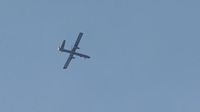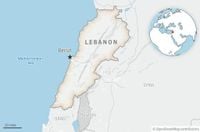On Sunday, October 26, 2025, a dramatic escalation unfolded along the tense border between Israel and Lebanon: United Nations peacekeepers shot down an Israeli drone near the southeastern Lebanese town of Kfar Kila. The incident—confirmed by both the Israeli army and the United Nations Interim Force in Lebanon (UNIFIL)—has sparked a flurry of international condemnation, exposed conflicting narratives, and deepened anxieties over the fragile ceasefire that has held since last November’s war between Israel and Hezbollah.
According to the Associated Press, the Israeli military described the drone’s mission as “routine information-gathering and reconnaissance activity.” Israeli Arabic military spokesperson Avichay Adraee emphasized that the drone “did not fire at the peacekeeping troops.” However, the situation quickly escalated after the drone was shot down. “After the drone was shot down, Defense Army forces threw a hand grenade at the area where the drone was downed,” Adraee stated on X, formerly Twitter. The Israeli narrative maintains that their actions posed no threat to UNIFIL personnel.
But UNIFIL’s account, echoed in statements from the United Nations and French officials, paints a more fraught picture. UN spokesperson Stephane Dujarric labeled the episode “very, very dangerous,” noting that the drone flew over a UNIFIL patrol in an “aggressive manner.” UN peacekeepers, he said, “applied necessary defensive countermeasures to neutralise the drone.” Moments later, a second Israeli drone dropped a grenade near the peacekeepers, and an Israeli tank fired a shot toward them. Fortunately, no injuries or damage were reported, but the incident left nerves frayed and tempers high.
France’s Ministry for Europe and Foreign Affairs did not mince words, condemning “the Israeli fire that targeted a UNIFIL detachment.” The French foreign ministry also pointed out that this was not an isolated event, but rather the latest in a string of similar attacks on October 1, 2, and 11. A French diplomatic source confirmed that the UNIFIL troops involved in Sunday’s incident were French. “These incidents follow those observed on October 1, 2, and 11, when the Israeli army had already targeted UNIFIL positions,” the ministry said, highlighting a troubling pattern of confrontations.
UNIFIL, established in 1978 after Israel’s initial invasion of southern Lebanon, has seen its mission expand and contract in response to the region’s shifting tides of conflict. Most recently, its mandate was broadened after the devastating 2006 war between Israel and Hezbollah. Earlier this year, the U.N. Security Council voted to terminate UNIFIL’s mandate as of December 31, 2026, giving the force a year to wind down and withdraw. Yet, as the events of this past weekend show, peacekeeping in southern Lebanon remains as perilous and politically fraught as ever.
The broader context for Sunday’s incident is a region on edge. The ceasefire that ended the November 2024 war between Israel and Hezbollah has been repeatedly tested by near-daily Israeli strikes on Lebanese territory. According to RFI and other sources, Israel continues to occupy five strategic positions in southern Lebanon, in direct contravention of the ceasefire agreement. The Israeli army claims these operations are aimed at targeting Hezbollah fighters and infrastructure. However, Lebanese leaders accuse Israel of deliberately obstructing reconstruction efforts, citing attacks on civilian machinery such as diggers and bulldozers.
The violence has not been without tragic consequences for Lebanese civilians. The Lebanese official news agency ANI reported that on Monday, October 27, two brothers were killed in a strike on a sawmill in the village of al-Bayyad in the Tyre district. The previous day, three people lost their lives in raids on southern and eastern Lebanon. The Israeli military asserted that its Sunday attacks targeted “an arms dealer working for Hezbollah and another man who was aiding the group’s attempts to rebuild its capacity for military action.”
The roots of this latest round of hostilities trace back to the seismic events of October 7, 2023, when a Hamas-led attack on Israel triggered a devastating war in the Gaza Strip. In solidarity with Hamas and the Palestinian cause, Hezbollah—largely based in southern Lebanon—began launching rockets into Israel. The subsequent Israeli response, both in Gaza and across Lebanon, has kept the region in a state of perpetual tension. As the BBC and other outlets have noted, the Lebanese government now finds itself caught in a vice: under intense international pressure, particularly from the United States, to disarm Hezbollah, even as the group remains defiant. “The possibility of war exists but is uncertain; it depends on their calculations,” said Hezbollah leader Naim Qassem, referencing Israel’s next moves.
UNIFIL’s mandate, as outlined by the Security Council, requires it to work alongside the Lebanese army to enforce the ceasefire. Under the terms of last year’s truce, Israeli troops were to withdraw from southern Lebanon, while Hezbollah was to pull back north of the Litani River and dismantle its military infrastructure in the south. Only the Lebanese army and UNIFIL are supposed to be deployed in the area. Yet, as of late October 2025, Israeli forces remain dug in at five border points, and strikes have only intensified.
In a sign of mounting diplomatic pressure, US Middle East envoy Morgan Ortagus arrived in Beirut on October 27 to meet with Lebanese leaders. The United States has made no secret of its desire for Hezbollah to surrender its weapons to the Lebanese army—a demand that Hezbollah and its allies have staunchly resisted. The Lebanese government, meanwhile, has begun tentative efforts to disarm the group, but progress has been slow and fraught with political peril.
Sunday’s drone incident has brought these simmering tensions into sharp relief. The Israeli military, for its part, insists that its drone “did not pose a threat to UNIFIL forces,” as stated by military spokesman Lieutenant Colonel Nadav Shoshani. But the United Nations and France argue that the pattern of aggressive Israeli actions against UN peacekeepers cannot be ignored. “It’s not the first time that we feel we’ve been targeted in different ways by the IDF, including pointing lasers or warning shots. It’s very, very dangerous,” said UN spokesperson Stephane Dujarric.
As the world watches southern Lebanon, the stakes could hardly be higher. UNIFIL’s presence, once seen as a buffer against renewed war, now finds itself in the crosshairs of a conflict that shows little sign of abating. The ceasefire, already battered by repeated violations, teeters on the brink. For the peacekeepers on the ground, the risks are growing—and so too are the questions about the future of peace in this volatile corner of the Middle East.

